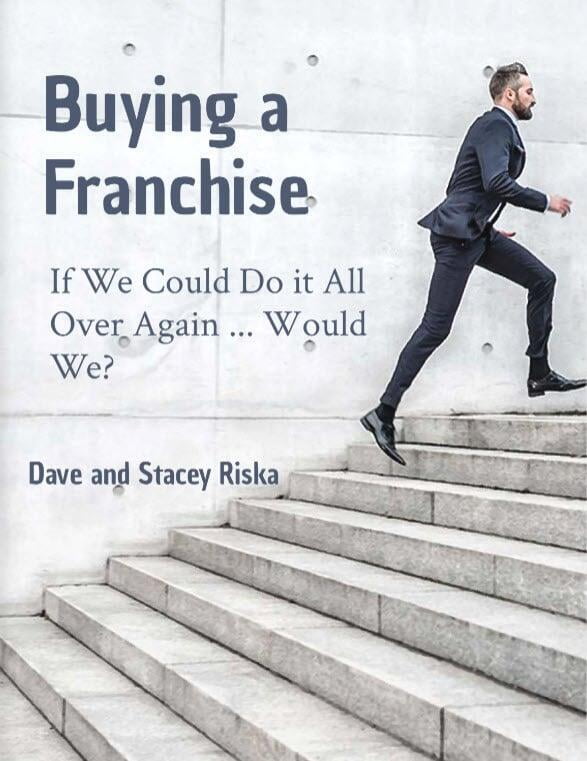
We’re covering another section in the Franchise Disclosure Document (FDD), and this one is a biggie … this is section/item number seven. This section/item is really where a lot of people spend a lot of time evaluating what their total investment is going to look like in acquiring and running this franchise on an ongoing basis.
Previously we've given you the framework for section/item five and section/item six. This is really giving you the broad-stroke picture of what it's going to look like for you in year one, the total investment that you're going to need to come up with. And it's also going to give you some framework for what your expenses are going to look like on an ongoing basis. There's a lot here and it's truly one of the most critical sections of the Franchise Disclosure Document.
First off this section is based on real-life data. Franchisors must disclose to you how the franchisees and their system are doing in this section/item. Now, not individually such as Stacey did this, Dave did this, Bob did this, Sarah did that. No, but they collaborate/consolidate all that information and they report it back in section/item seven as an investment range. Sometimes you'll see that the range is very close in the minimum/maximum numbers, but the idea is that it gives you a low and a high.
Now, some of the variables where there may be a larger range are when there's real estate involved. For instance, there are different classes of real estate and different sections of the country and that's just going to vary so much. So depending on your build-out costs, that tends to be where there's a much larger range in the investment. So look at that based on where you're located. For example, we're in Washington DC, and if we're looking at a franchise that has a range let's say from $50K to $150K, we know that we should budget on the higher end because everything is so much more expensive here. But if you're in the middle of the country, in a smaller, more rural town, maybe you're on the lower end. So it is kind of nice they give you ranges.
It's one of those things where you have some input on these amounts as well, and where you live is certainly not something that's negotiable. Where you get your territory is not something that's negotiable. As we suggested Washington DC is amongst the highest rents in the country, so if I were going to evaluate a franchise for somebody here I'm going to put them on the high end.
But what has a larger impact is the class of real estate. This is where you as a franchisee have some impact, and it may make sense for you to spend the extra money for Class A space versus a Class C space. So, it's one of those things where we believe it's nice to see the range, but it's also something that I would not necessarily put myself at the bottom of the range because I'm in the suburbs somewhere in Minnesota versus Washington, DC.
Some of this is going to be impacted by the cost of where you operate your business, but it's also going to be impacted by the type/class of real estate if you are looking at some type of brick-and-mortar franchise.
So that's a really critical piece of section seven and this is truly one of the most important sections that you clearly understand before you acquire a franchise what is this going to look like for you (financially) in year one, year two and year three? The beautiful thing about it is we've been saying is that, hey, what other place if you're looking at a business can you get this kind of information upfront? You can make an informed decision.
If you bought a CarFax and you found out that the car was flooded are you going to go out and buy that car ... I'm not sure I would, right? So having this information disclosed to you and giving you some type of framework for what your costs are going to look like can really help you make a very informed decision. So that's one of the beautiful things about the Franchise Disclosure Document (FDD).
The FDD scares a lot of people away because it's so big and so long, and it's almost daunting, but it's truly really critical that you do understand this document. It's truly really critical that what you don't understand, you get the answers to either from somebody you're working with, like us, who can help you understand this document. Also, we always recommend that you look at hiring a franchise attorney to help you evaluate the FDD, and certainly during the due diligence phase,
It's, it's also very important to validate these numbers when you're talking to some of the other franchisees. We've had a whole episode about due diligence and talking to other franchisees and the questions to ask. It is critical that you go through all these phases and really validate that these numbers make sense to you and you're comfortable with them.
You should also try to understand how this data is put together. How many franchisees were included in this initial investment range? Many times when it's an emerging brand, it will just be like the company locations, and therefore the ranges, although they may be tighter, actually over time they may get larger because as the franchise starts getting growing and getting more buying power. Therefore, to open these locations could change dynamically. Purchasing power could bring down the price, as time goes on, it could, and/or escalate the price because the franchisor is upscaling. So there are a lot of things that affect these numbers over time, and they will change from year to year.
This truly is one of the most important sections of the Franchise Disclosure Document (FDD). Make sure you understand these numbers before making an investment in any franchise.
Some of this is going to be impacted by the cost of where you operate your business, but it's also going to be impacted by the type/class of real estate if you are looking at some type of brick-and-mortar franchise.
So that's a really critical piece of section seven and this is truly one of the most important sections that you clearly understand before you acquire a franchise what is this going to look like for you (financially) in year one, year two and year three? The beautiful thing about it is we've been saying is that, hey, what other place if you're looking at a business can you get this kind of information upfront? You can make an informed decision.
If you bought a CarFax and you found out that the car was flooded are you going to go out and buy that car ... I'm not sure I would, right? So having this information disclosed to you and giving you some type of framework for what your costs are going to look like can really help you make a very informed decision. So that's one of the beautiful things about the Franchise Disclosure Document (FDD).
The FDD scares a lot of people away because it's so big and so long, and it's almost daunting, but it's truly really critical that you do understand this document. It's truly really critical that what you don't understand, you get the answers to either from somebody you're working with, like us, who can help you understand this document. Also, we always recommend that you look at hiring a franchise attorney to help you evaluate the FDD, and certainly during the due diligence phase,
It's, it's also very important to validate these numbers when you're talking to some of the other franchisees. We've had a whole episode about due diligence and talking to other franchisees and the questions to ask. It is critical that you go through all these phases and really validate that these numbers make sense to you and you're comfortable with them.
You should also try to understand how this data is put together. How many franchisees were included in this initial investment range? Many times when it's an emerging brand, it will just be like the company locations, and therefore the ranges, although they may be tighter, actually over time they may get larger because as the franchise starts getting growing and getting more buying power. Therefore, to open these locations could change dynamically. Purchasing power could bring down the price, as time goes on, it could, and/or escalate the price because the franchisor is upscaling. So there are a lot of things that affect these numbers over time, and they will change from year to year.
This truly is one of the most important sections of the Franchise Disclosure Document (FDD). Make sure you understand these numbers before making an investment in any franchise.
What's Your Next? - Podcast
 | Author BioI’m Stacey Riska aka “Small Business Stacey”, your franchise placement specialist. I help aspiring business owners find the PERFECT franchise so they can get to the next level in life and business. |


